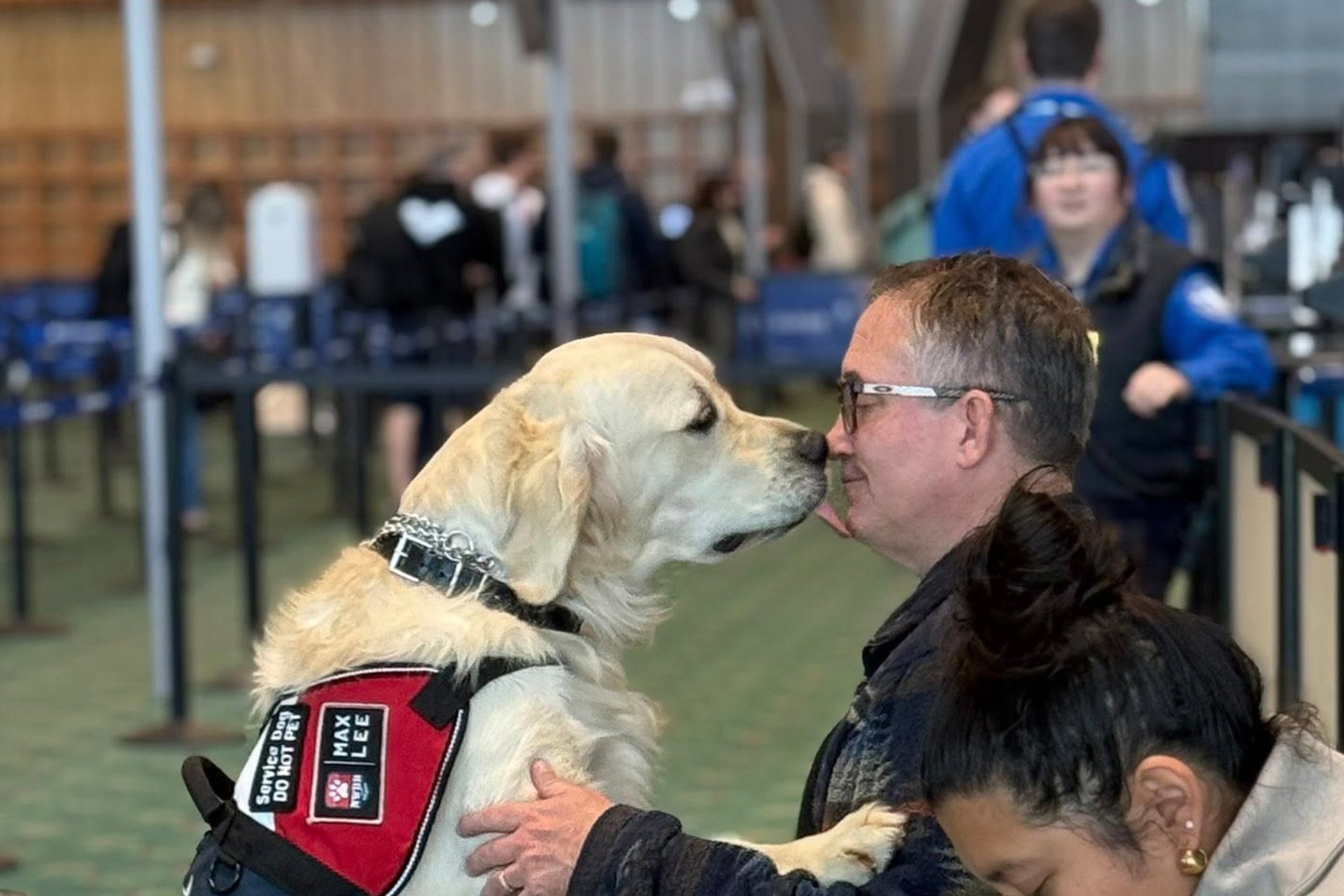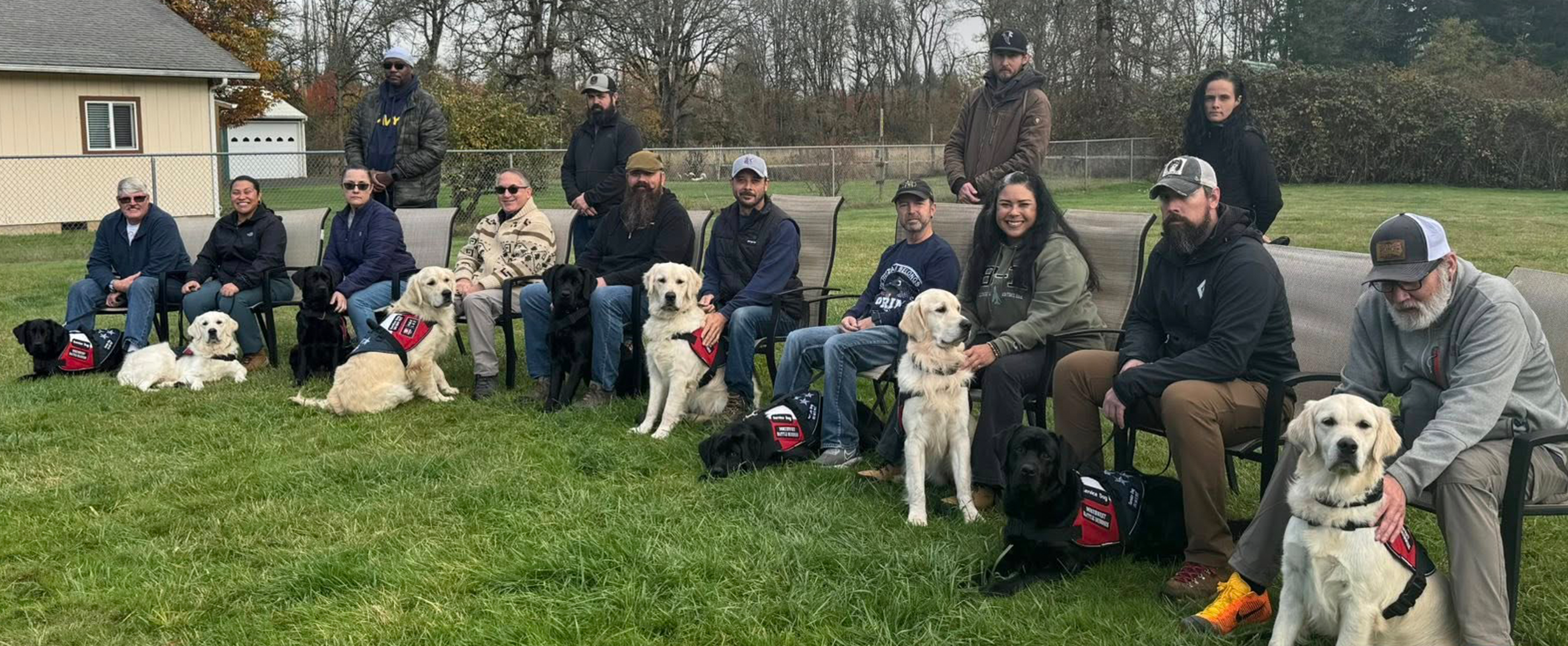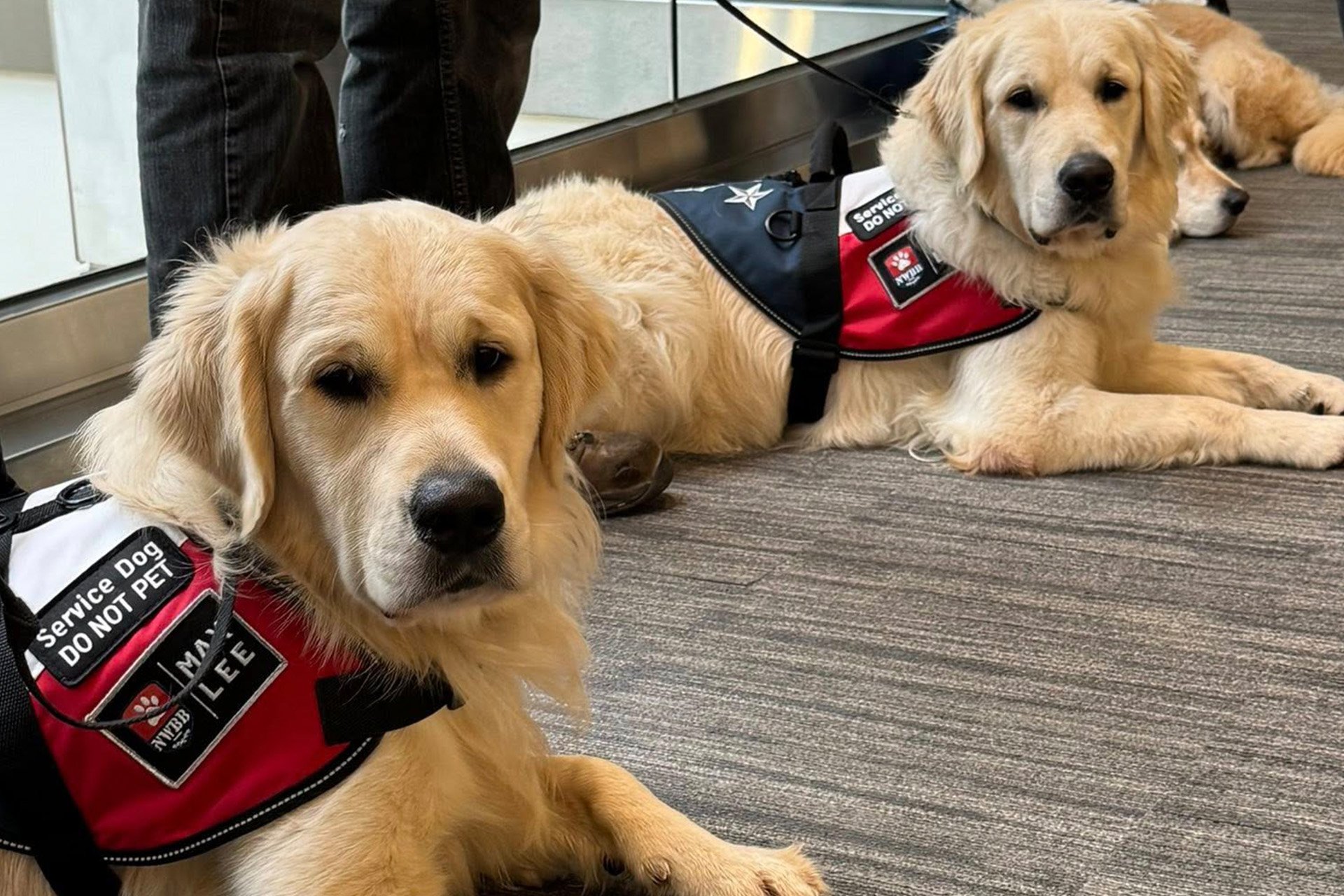What to Expect During PTSD Service Dog Training With Northwest Battle Buddies
Key Takeaways
- Northwest Battle Buddies’ (NWBB) PTSD service dogs undergo over 360 hours of training before certification.
- PTSD service dog training includes five months of professional instruction followed by a five-week intensive handler program for Veterans.
- Dogs learn essential tasks including nightmare interruption, alerting on adrenaline, interrupting panic attack attacks, redirecting flashbacks, and deep pressure therapy (DPT).
- NWBB commits to lifetime support for both American Heroes and their service dogs, including ongoing education and recertification.
- Veterans and service dogs must pass the Association of Service Dog Providers (ASDP) Temperament and Obedience Test as well as ASDP‘s Public Access Test before graduation.
At Northwest Battle Buddies (NWBB), excellence in training is our foundation. Our professionally trained PTSD service dogs receive over 360 hours of instruction before certification, but our commitment doesn't end there. NWBB supports both American Heroes and their service dogs for their entire lifetimes.
Learn more about our comprehensive training program and what makes it effective.
|
This level of comprehensive training and lifetime support is made possible through generous contributions to Operation Never Quit (ONQ). Service dogs are expensive to train, and every donation helps us provide life-changing service dogs to Veterans at no cost to them. Your support ensures we can maintain our commitment to both Veterans and dogs throughout their lives. |
PTSD Service Dog Training, Month By Month
Months 1-2: Building the Foundations
Long before our American Heroes meet their canine partners, PTSD service dog training begins with basic obedience. To ensure our training is solid, dogs practice in multiple public locations including grocery stores, malls, movie theaters, airport security, churches, trains, and city buses. Dogs master commands such as sit, stay, heel, down, here, and load (for getting into vehicles) while on leash, off leash, and under distraction.
PTSD service dogs are taught to ignore all food, even when placed inches from their face. They also learn to maintain a respectful and calm demeanor around humans at all times — essential qualities for Veterans who need reliable partners in any environment.
Months 3-5: Specialized Task Training
Over the next three months, our PTSD service dog training advances to specialized tasks that address symptoms commonly experienced by Veterans battling post-traumatic stress disorder. A true service dog must be trained to perform at least one specific task related to a disability.
Our dogs learn several critical skills:
- Waking their Veteran from nightmares
- Interrupting anxiety attacks
- Redirecting flashbacks
- Alerting on adrenaline
- Acting as a social barrier in public
- Providing a constant feeling of safety
- Performing deep pressure therapy (DPT)
These skills form the core of what makes our PTSD service dogs effective and capable of truly transforming the lives of American Heroes.
Matching Each Veteran With the Right Dog
After accepting a Veteran our program, we conduct a comprehensive interview to determine the perfect canine match. We consider the Veteran's age, health, mobility, living conditions, profession, activity level, family dynamics, general personality, and future goals.
We also fully assess each dog's temperament, energy level, and guidability during the training process. This allows us to match the best dog for each Veteran specifically.
Month 6: Five-Week Veteran Training Program
After dogs complete their five-month training program, we match Veterans with their canine partners (forming “Veteran teams”) for an intensive five-week handler instruction program.
Veterans receive education in dog obedience, dog psychology, pack order and instinct, learning to "read" dog behavior, and public access work. Each day includes five to eight hours of training, Monday through Friday, totaling a minimum of 135 hours of personalized instruction.
Week 1: Veterans meet their service dogs and begin learning basic handling skills. Each day, Veterans practice executing commands including heel, sit, and down. They also learn how to load and offload their dogs into vehicles.
Week 2: Teams complete on- and off-leash obedience training in the field and in simulated grocery store and restaurant scenarios at our facilities. Day five marks the Veterans' first public grocery store outing. Afterward, we debrief about the experience and continue education regarding Americans with Disabilities Act (ADA) laws and guidelines.
Week 3: Veterans begin taking their dogs home for two nights per week during the final three weeks. This gradual integration allows dogs to adjust to the Veteran's daily life while still receiving NWBB support. After overnights, we debrief about any challenges, experiences, and successes. Veterans are also encouraged to take their dogs out in public, even for simple errands.
Week 4: We conduct interviews with Veterans' significant others and families. Families receive written information outlining proper service dog etiquette and best practices to help ensure the dog’s success. They're also encouraged to ask any questions about their roles in supporting the Veteran-canine team.
Week 5: During the final week, Veteran and service dog partners demonstrate their skills for the Association of Service Dog Providers (ASDP) Public Access Test. Two additional overnights occur before final testing. Upon passing all testing, including the ASDP Temperament and Obedience Test, NWBB provides service dogs to the Veterans along with all physical tools and equipment required, including grooming tools, beds, and crates.
If you’re a Veteran interested in applying for a PTSD service dog but have more questions about the process, check out this FAQ post.
Month 7 and Beyond: Lifetime Support
No matter what challenges arise, we’re committed to our dogs and American Heroes for the long haul. After returning home, Veterans are contacted by our Veteran liaison within the first two weeks to address any unanticipated needs.
Future follow-up is determined on a case-by-case basis. Recertification is required at three months, nine months, and then annually. We also provide ongoing education for any of our Veterans at any time.
On rare occasions when a match isn't working out, a service dog may be exchanged with another dog. If a Veteran faces financial hardship, we offer support with whatever the dog needs. When a service dog passes away, we offer Veterans another service dog when they're ready for a new partnership. Should a Veteran pass away, we provide the family with the option to keep the service dog or surrender it to the organization for reassignment.

Support Our Mission
Now you know what goes into NWBB's intensive and thorough PTSD service dog training process. We maintain these high standards because we're committed to our American Heroes, service dogs, and achieving positive results.
Your monthly donation to Operation Never Quit (ONQ) helps us continue providing life-changing service dogs to Veterans who need them.
Are you a Veteran interested in our program? Apply for a service dog here!



